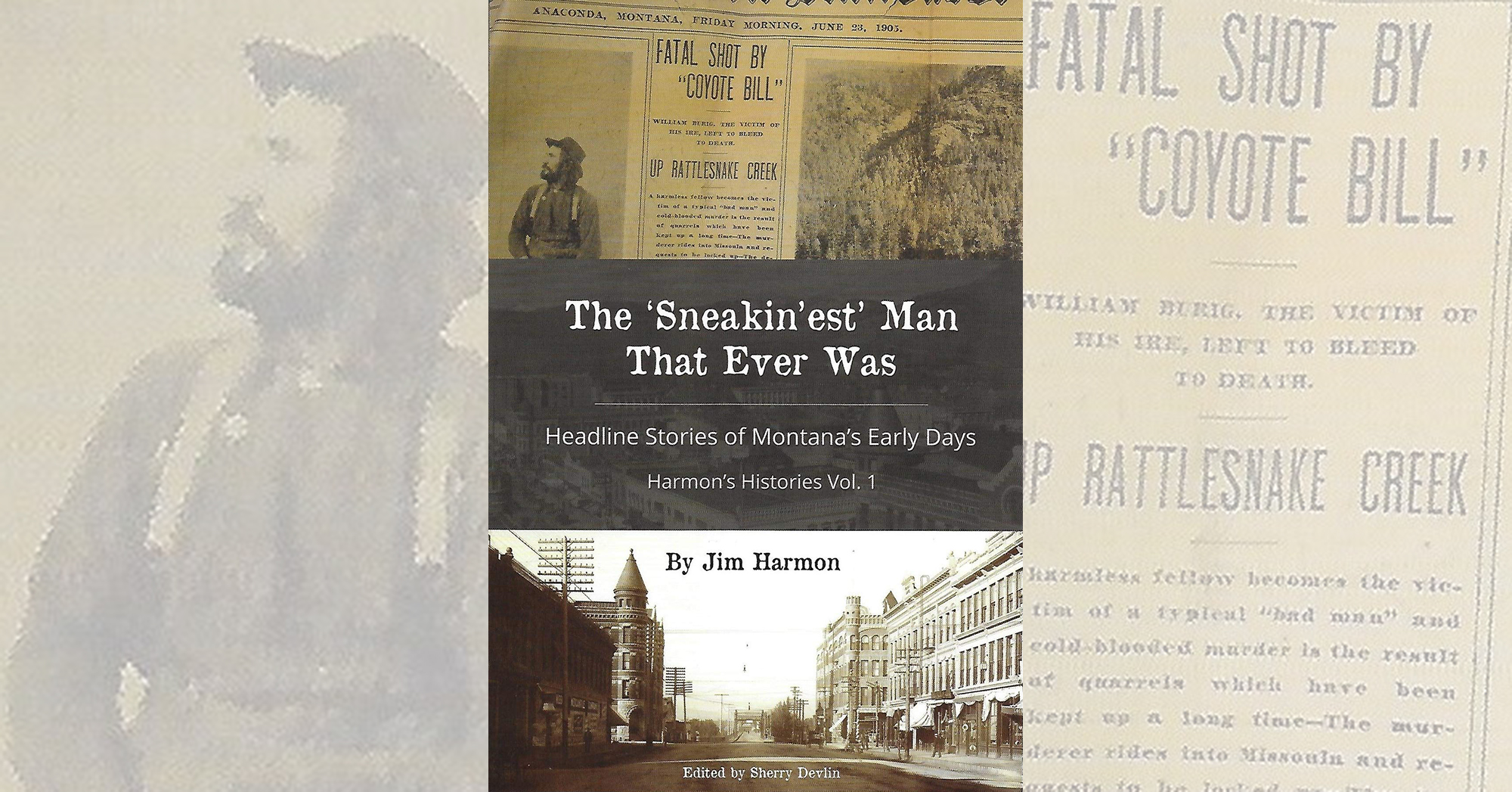The ‘Sneakin’est’ Man That Ever Was: Headline Stories of Montana’s Early Days: Harmon’s Histories, Vol. 1, by Jim Harmon, Stoneydale Press Publishing Co., Stevensville, Mont. 2020, $19.95
Montana native and retired journalist Jim Harmon clearly thinks history should be fun. While it might not rate as a history book per se, this volume presents short stories Harmon wrote based on late 19th-century accounts from such newspapers as the Western Democrat, Northwest Tribune, Missoulian and Missoula Weekly Gazette. And they are fun—at least in part.
The “Sneakin’est Man” of the title is Karolus William “Coyote Bill” Beeskove, a hunter, trapper and miner with an irascible nature who lived in Missoula’s Rattlesnake Valley. In 1894 the Missoulian gave him a tongue-lashing in print for failing to search for a missing comrade up in the Rattlesnake, and a few days later it noted Coyote Bill “has threatened to wipe out the entire staff and all the other beautiful things to be found within the four walls of the Missoulian building.” A decade later Beeskove killed a “trespassing” woodcutter, and the Missoulian, still very much intact, reported on Sept. 17, 1905, he’d been found guilty. Although sentenced to hang, he appealed, and at his second trial he was convicted of manslaughter and instead sentenced to seven years in prison. In June 1916 he was found facedown in Magpie Creek, his throat and wrists cut.
Other characters include Shakespearean actor Daniel Edward Bandman, who made headlines after settling in Missoula in the late 1880s (e.g., “The Tragedian Sues His Erstwhile Leading Lady” and “Took a Tragedian’s Teeth: Western Dentist Holds the Molars of Mr. Bandman on a Horse Trade”); cantankerous and contrary Dunn Creek Nell, a local legend up near Libby who terrified at least one neighbor by claiming to have had 17 husbands and burned them all in the cookstove; and Mark Twain, who in 1895 gave a lecture at Missoula’s Bennett Opera House, then promptly got “lost” while walking out to Fort Missoula for lunch. Harmon reports that in 1883 a member of Missoula’s clergy complained, “The streets of Missoula after nightfall were hell compared to anything he’d seen before.” But in 1917 a university student wrote in an essay, “Missoula is such a nice pretty little city, but it has no thrill, no colorfulness, no sparkle. It’s a good, convenient place in which to acquire book-knowledge, or to grow old.…Missoula smiles quietly and rather sweetly at you any sunshiny day, but can you imagine our Missoula giggling?”
—Editor
This post contains affiliate links. If you buy something through our site, we might earn a commission.





